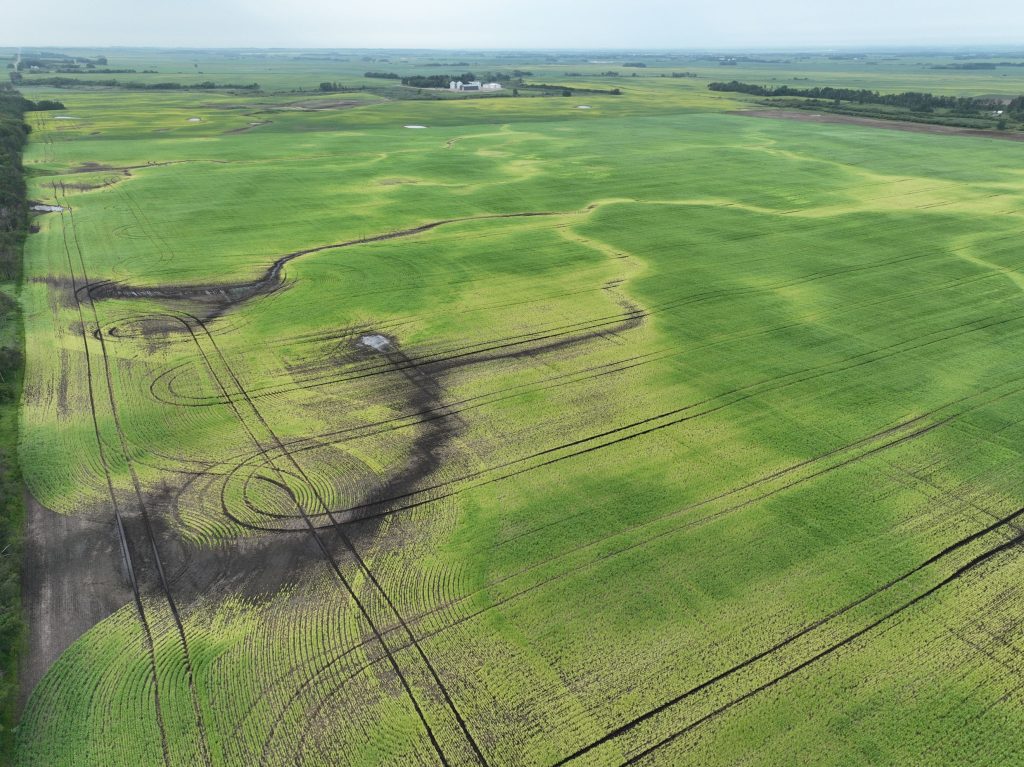BY: Cassandra Tkachuk, Research Project Manager, MPSG
Each year, Manitoba Pulse & Soybean Growers (MPSG) leverages check-off dollars to invest in cutting-edge research projects that will bring value back to your farm.
One such project, which launched in 2024, is taking a multidisciplinary approach to control the pea and lentil root rot complex in Western Canada. It includes a combination of advances in genetics, breeding, genomics, agronomy and novel biotechnology applications. This impressive study is highly collaborative in both funding partners and researchers.
It’s a five-year study with a total budget of about $4.2 million. This mammoth project is funded through the Saskatchewan government’s Strategic Research Initiative with support from the Sustainable Canadian Agricultural Partnership ($2.5 million) and several industry partners ($1.7 million). Industry partners include Saskatchewan Pulse Growers, Alberta Pulse Growers, MPSG, Western Grains Research Foundation and Results Driven Agriculture Research.
MPSG’s contribution is just over $35,000. Though a relatively low investment, this is reflective of much of the work taking place in Saskatchewan. MPSG’s support for this project will give us access to all the results, which will benefit the Manitoba pea and lentil industries. This shows the true power of collaboration.

Then there’s the sheer importance of what they are studying. Root rot is the number one concern of pea and lentil growers across Western Canada. Some farmers have even removed these crops from their rotations in certain areas due to its damaging impact on their bottom lines.
The work will be done by project lead, Sabine Banniza of University of Saskatchewan’s Crop Development Centre, along with a huge team of 15 fellow researchers across Saskatchewan.
Accelerate Discovery of Root Rot Solutions for Peas and Lentils
Project Objectives:
- Optimizing crop rotations to mitigate pea and lentil root rot diseases
- Integrating pest management using biocontrol, natural products and tolerant lines
- Implementing biocontrol of Aphanomyces root rot using bacteria isolated from soil
- Characterizing the diversity and abundance of Aphanomyces and Fusarium populations in Saskatchewan
- Conducting molecular and conventional breeding for improved root rot resistance and rapid variety release in peas and lentils
- Utilizing gene editing in lentils
- Expanding genomic resources for Western Canadian Aphanomyces
- Applying RNAi for control of Aphanomyces
- Investigating the effect of secondary metabolites and polyphenols within pea and lentil roots on root rot
- Studying host-pathogen interactions with Fusarium avenaceum toxin knock-out isolates
- Exploring endophytic control of root rot in lentils using the Medicago Root Infection Model
RNA interference (RNAi) for in-field management of root rot is one of the cutting-edge aspects of this study. This method involves directly targeting root rot pathogens, in this case Aphanomyces euteiches, at the genetic level to interfere with their ability to infect and spread in the plants.
Will this project place Canada as a global leader in pulse root rot research? It will be one to watch over the next five years.
